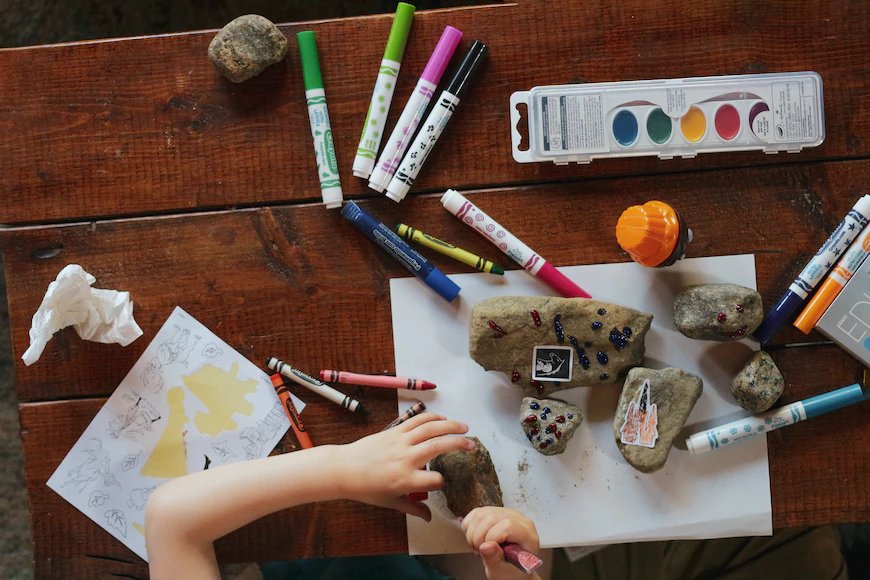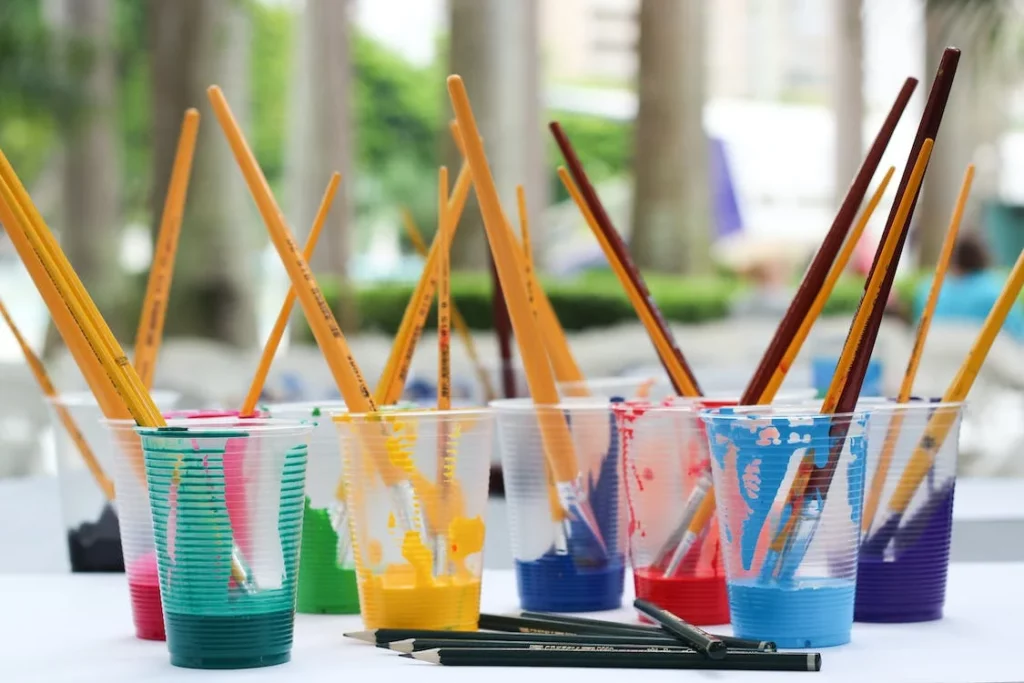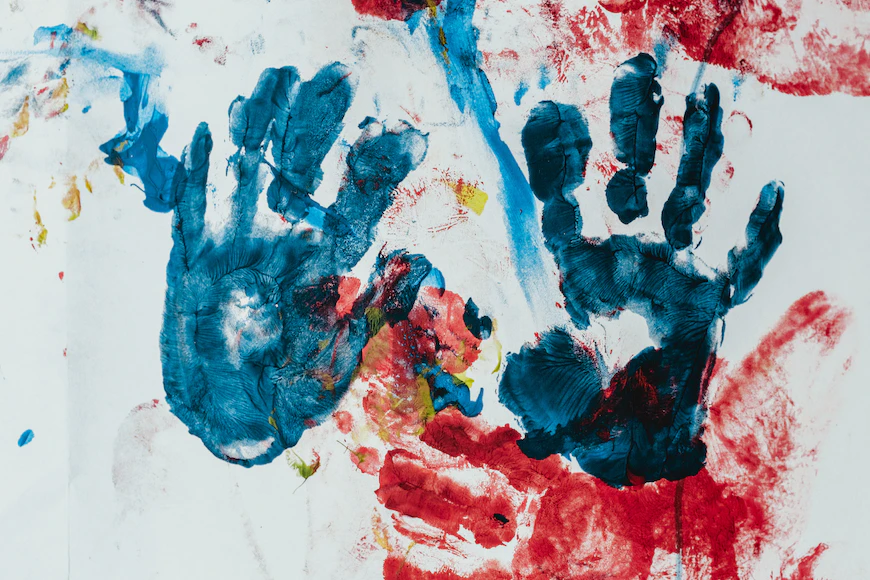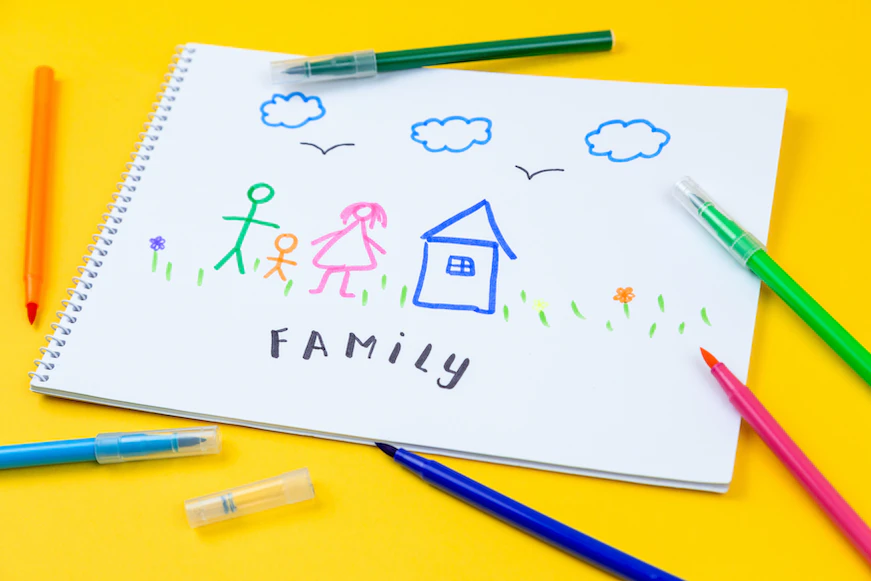"Art therapy accommodates the creative process with psychotherapy, allowing for self-discovery and comprehension."

Expressive art therapy can be a powerful and beneficial tool for children of all ages. Through art activities, they can learn to explore their emotions and gain insight into their inner lives. Art therapy aims to provide children with an outlet for expression and to help them cope with complicated feelings. Art therapy can also be particularly helpful for children who have experienced trauma, as it allows them to process their emotions and experiences in a safe and supportive manner.
When combined with counselling, art therapy can provide children with the tools they need to improve their mental and physical health. Through art activities, children can explore their feelings in an accepting and non-judgmental environment where they can express themselves without fear of criticism or reprimand.
Introducing and Creating a Safe Space for Expressive Art Therapy

Expressive art therapy is a process that encourages children to explore their emotions and experiences through art. It is based on the idea that art activities can help children identify and express feelings, thoughts, and ideas that they may not be able to verbalise.
During art therapy sessions, the therapist will provide art materials such as paints, clay, paper, markers, and other creative tools for the child to work with. Art therapy needs to be done in a safe and comfortable environment. This means that art activities should be conducted in an area where children can feel secure and free from distractions.
The therapists should create an atmosphere free of judgment and encourage self-expression through art rather than focusing on the final product. They will also offer guidance and support to help the child understand their art better.
Different Types of Art Therapy Techniques

Expressive art therapy techniques are varied and can be tailored to meet children’s individual needs. Painting, drawing, sculpting, music, and dance are all art forms that can be used in art therapy sessions.
There is no “right” or “wrong” way to approach art therapy. Instead, art activities should be structured around a certain topic or goal. Through art activities such as creating art with clay, painting abstract art, or making collages, children can learn how to better understand themselves and their emotions.
Mental Benefits of Expressive Art Therapy for Kids

Besides helping children develop a better understanding of their emotions, art therapy can also help children understand the emotions of those around them, improve problem-solving skills, and gain confidence in themselves.
Expressive art therapy can be used to work through traumatic experiences or difficult emotions. Children can benefit from improved mental health, better communication skills, enhanced self-awareness, reduced stress levels and increased resilience.
Physical Development Using Various Art Modalities

Art can help improve motor skills and hand-eye coordination as art activities require children to use both hands and different parts of their bodies to create art. It can provide an outlet for physical expression which helps children to become more aware of how their bodies move in certain ways. This awareness often leads to an improved understanding of how their emotions manifest physically and how those feelings impact their behaviour.
This therapy is especially beneficial for children with Autism Spectrum Disorder (ASD), Attention Deficit Hyperactivity Disorder (ADHD), attachment issues, trauma, or learning disabilities.
Encouraging Creative Exploration at Home

Parents can also benefit from art therapy by encouraging creative exploration at home. This means providing children with art supplies or other materials that allow them to express their creativity. Parents can also take the time to sit down with their children and discuss their artwork together. Doing so helps validate the child’s feelings while allowing them to discuss whatever emotions they may have felt when creating it.
When engaging in art therapy at home, parents should remember that there is no right or wrong way for a child to express themselves through art. Creating art should be a fun and positive experience that allows children to explore their thoughts and feelings in a safe environment. With this approach, parents can help their children gain emotional self-awareness and improve communication skills.

Leave a Reply